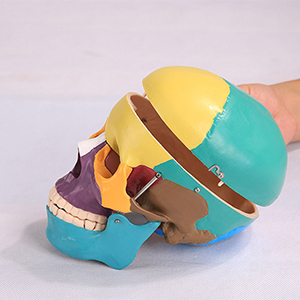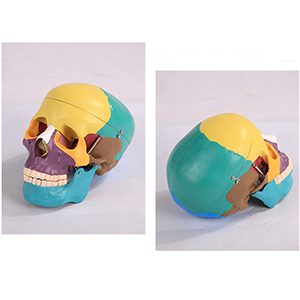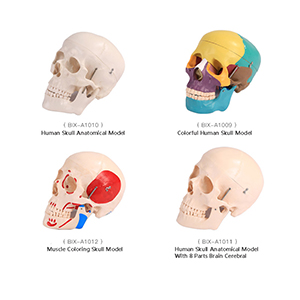

Article tag: Color skull model| BIX-A1009| skull model|
In general, behind the hot color skull model is the upgrading of market demand, the innovation of education methods and the continuous progress of technology. For medical educators and medical institutions, the use of high-quality, accurate and visual teaching tools has become an important means to improve the training effect and learning efficiency.
...In recent years, the demand for colored skull models has soared in many fields, such as medical education, oral training, surgical planning and artistic design. With the increasing trend of digitalization and visualization in medical teaching, the market demand for high-precision and intuitive learning tools is growing, making colored skull models a hot spot in the industry.
Market growth data: Demand is rising and the industry is expanding
According to market researcher Statista, the global medical anatomical model market is expected to grow at a compound annual growth rate (CAGR) of 7.5% between 2023 and 2030, of which the color partition skull model will continue to increase its share in the medical education market due to its intuitive and easy to understand characteristics. Especially in medical school, oral medicine training and neurosurgery teaching, color skull model has become a standard tool because it can clearly distinguish skull structure and improve learning efficiency.

Industry expert opinion: Color partition model improves learning efficiency
Medical education experts point out that while traditional monochrome skull models can provide basic anatomical information, it is difficult to help beginners quickly understand the distribution of different skull regions. By marking frontal bone, parietal bone, temporal bone and sphenoid bone with different colors, the color partition skull model enables learners to intuitively understand the anatomical relationship of each bone and thus accelerate the mastery of anatomical knowledge.
In addition, anatomy professor Dr. Smith believes that the popularity of color skull models not only improves the teaching quality of anatomy courses, but also enhances the spatial cognitive ability of students, especially in 3D anatomy learning and surgical planning, color models can help future doctors adapt to clinical needs more quickly.

Technological innovation drives market expansion
The market appeal of coloured skull models has increased dramatically in recent years. Traditional plaster models have problems such as heavy weight and fragile, but the new environmentally friendly resin material is not only durable, lightweight, but also provides higher anatomical accuracy. In addition, AR/VR technology combined with color anatomical models is becoming a new trend in medical education, allowing students to further explore skull structures in a virtual environment and enhance the learning experience.

In general, behind the hot color skull model is the upgrading of market demand, the innovation of education methods and the continuous progress of technology. For medical educators and medical institutions, the use of high-quality, accurate and visual teaching tools has become an important means to improve the training effect and learning efficiency.